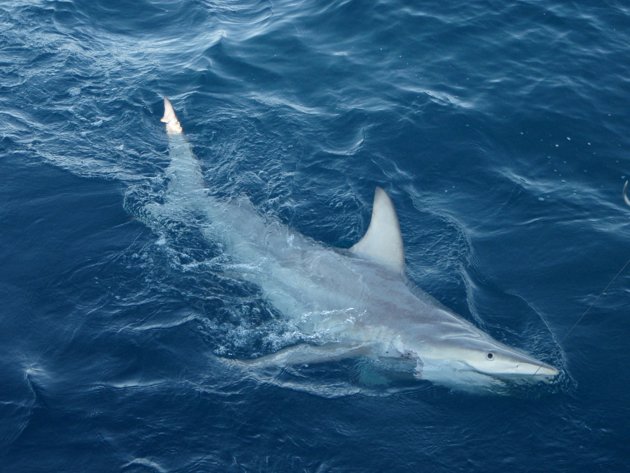The changing climate that increasingly dominates the news is beginning to play its hand in some strange and unexpected ways. Creatures from algae to fishes are busting out of their old geographic ranges and striking out into new territories. A case in point: the microscopic phytoplankton species Neodenticula seminae, a dominant primary producer in North Pacific ecosystems, suddenly showed up in 1999 in the Atlantic for the first time in 800,000 years following an exceptional year of ice-free water in the Canadian Arctic. Now it’s apparently here to stay and they may well change the strength of the Atlantic’s “biological pump” that transports organic matter from surface waters into the deep sea, since the cells are heavier than those of the species they are replacing.

In fact, climate warming (or, perhaps more accurately, ocean warming) is increasingly churning up the geography of living organisms, expanding geographic ranges poleward in many (but not all) marine species. Simple models based on physiological tolerances of species suggest that the mean “invasion intensity” — essentially the turnover of species — may reach a global average of 55% in the coming century (see the map at right). It doesn’t take an overactive imagination to realize that this will likely result in fundamental upheaval of the way that many ocean ecosystems look and work.
But Mother Nature (are we still allowed to use that quaint expression?) has a few new tricks up her sleeve. The big shuffle is bringing formerly isolated species into contact with one another and, like barflies at closing time, they are doing things they might never have dared under normal circumstances:
They are (gasp!) interbreeding and — yes — evolving into new forms of life.
From Yahoo news:
“Scientists said on Tuesday that they had discovered the world’s first hybrid sharks in Australian waters, a potential sign the predators were adapting to cope with climate change.
The mating of the local Australian black-tip shark with its global counterpart, the common black-tip, was an unprecedented discovery with implications for the entire shark world, said lead researcher Jess Morgan:
“It’s very surprising because no one’s ever seen shark hybrids before, this is not a common occurrence by any stretch of the imagination — This is evolution in action.”
Colin Simpfendorfer, a partner in Morgan’s research from James Cook University, said initial studies suggested the hybrid species was relatively robust, with a number of generations discovered across 57 specimens . . . The hybrids were extraordinarily abundant, accounting for up to 20 percent of black-tip populations in some areas.”
Nor is this just an interesting curiosity of Nature. There are potentially real consequences at stake since the sharks are commercially harvested. As the authors of the paper, published in Conservation Genetics, note:
“Hybridisation between two commercially important shark species may affect fisheries resource sustainability under current management arrangements. If hybrids have reduced fitness and are common, then population productivity will be lower than predicted and harvesting at current levels could result in overfishing. Fishing techniques could unwittingly target one species over the other due to the size difference between of C. tilstoni and C. limbatus, which may be locally affecting the type of interspecies hybridization occurring in some populations. If hybrids have the same or higher fitness compared to the parental species, then over time the two species will merge into a single species and shark species biodiversity will be lost.”
We can expect to see more of this abominable sort of behavior now that climate change is breaking down all our respected conventions and norms of common decency. What next?
Original source: Morgan JAT et al. 2011. Detection of interspecies hybridisation in Chondrichthyes: hybrids and hybrid offspring between Australian (Carcharhinus tilstoni) and common (C. limbatus) blacktip shark found in an Australian fishery. Conservation Genetics DOI: 10.1007/s10592-011-0298-6

Leave a Reply